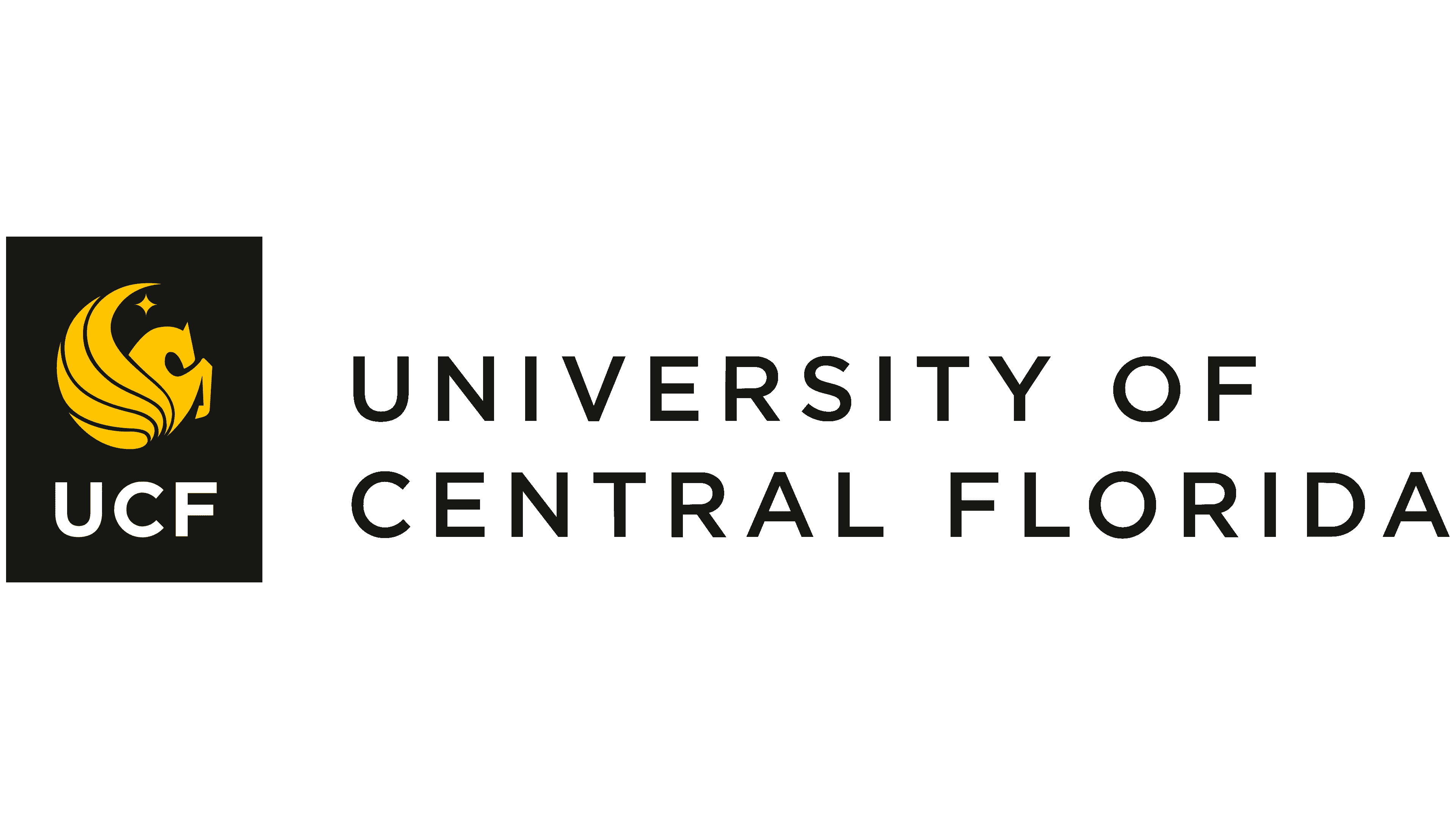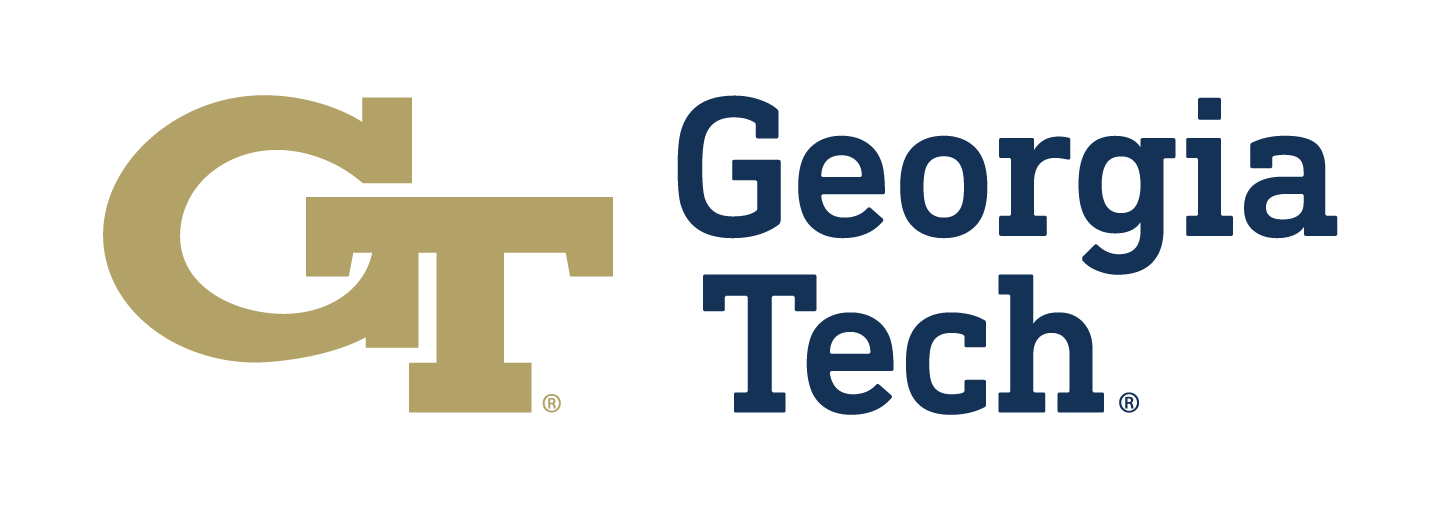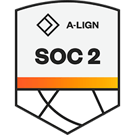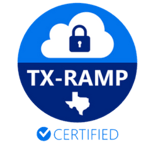Glean Security
This page is designed to help you better understand our security practices so that you can feel reassured that your data will be handled securely and with integrity.
Here at Glean we're passionate about security and recognize the importance of being transparent about what data we process, why we process it, where it's processed, and how we safeguard it.
Please use the table of contents to navigate between sections.
In order to monitor access and help us keep you up-to-date with changes and updates to this page, we'll ask you to provide your work email address before you can view/download some resources. For further information about how we handle your personal information, please refer to our Privacy Notice.
Glean is trusted by over 800 US Higher Education institutions




Table of contents
- Where and How an End User's Content is Stored
- Data Residency
- HECVAT (Higher Education Community Vendor Assessment Toolkit)
- SOC 2 Type II Compliance
- TX-RAMP Certification
- Independent Review by GreyCastle Security
- Penetration Testing
- Glean Platform Data Diagram
- Insurance
- Glean Data Security Policy
- Useful Links
- Contact Us
Where and How an End User's Content is Stored
Content created by a Glean user, like audio recordings and electronic notes, are stored locally on the user's device and then uploaded to Glean's cloud storage. The data is saved locally so that a user is able to record and edit their content while offline. Providing users with the ability to work offline was critical to the design of the Glean platform; we understand that notetaking shouldn't be dependent on having an internet connection.
Secure local storage:
Data saved locally is stored on hard disk in a Glean-readable format.
Secure cloud storage:
Data is uploaded to Glean's cloud storage, which is hosted across Amazon Web Services (AWS) and Google Cloud platforms in UK data centers. At this time, Glean does not provide data storage in any other territory.
More important stuff:
- Audio data is stored encrypted at rest and is only transmitted over encrypted channels between the browser and Glean's cloud servers.
- When online, the browser uploads data to the cloud. An end user's audio data is sent directly to AWS S3 servers and all other data (such as electronic notes and audio visualization data) is sent to Glean's database via the backend.
- All data is uploaded using a secure connection (HTTPS), and is saved in IndexedDB (a database built into the browser) so that Glean works offline.
- Audio files are captured in binary long objects, or blobs as we call them, and are encrypted and stored on AWS S3. The blobs are decrypted on retrieval and reassembled on the end user's browser.
Deleting content:
A user has the ability to delete content (or 'Events' as we call them) from their individual Glean account. After a user deletes their Event, it will no longer take up any space on their device and it won't be available to them (this is a 'soft' deletion). Glean retains deleted Events and the associated data for 90 days on the Glean database so that anything that was mistakenly deleted can be recovered. When the 90 days is up, the deleted Event and associated data are gone for good. Glean also maintains backups of user data to aid in disaster recovery scenarios (e.g. data corruption caused by a bug, an issue with Glean's database hosting service, or a ransomware attack). The longest Glean retains any such backup is 90 days.
Data Residency
Glean stores end user content, including audio recordings and transcripts, in UK data centers. Glean opted for UK data residency on the basis that we have a large UK customer base. Under the UK GDPR, Glean must follow strict regulatory requirements for the processing and storing of UK resident data. Glean ultimately made the business decision to store all end users' content in UK data centers to afford all data the same protection.
As part of the wider service, Glean works with a number of other third party providers who also process and store end user data. Examples include our Help Center and Customer Relationship Management (CRM) system. We explain who these providers are, where they are located, and the purpose for which we use them, in our Third Party Processors List which can be requested by emailing legal@glean.co.
How does storing data in the UK benefit me as an end user in North America?
Storing data in the UK data centers ensures that your personal information is protected in line with GDPR standards. This means that your data is subject to robust privacy and security measures, and you have the assurance that your information is being handled with a high level of care and security, regardless of your location.
Is data safe when stored in UK data centers?
Yes, your data is generally safer when stored in UK data centers under GDPR. GDPR sets strict rules for data protection, including encryption, data access controls, and breach reporting. These regulations ensure that your data is well-protected against unauthorised access and data breaches.
Do you offer data storage in other locations, such as the US?
Not right now, but we have ambitions to explore this. We’d love to hear your feedback, please reach out to security@glean.co.

HECVAT (Higher Education Community Vendor Assessment Toolkit)
What is it?
The higher education information security community, EDUCAUSE, Internet2, and the Research & Education Networks Information Sharing & Analysis Center (REN-ISAC) created the Higher Education Cloud Vendor Assessment Toolkit (HECVAT), a questionnaire framework specifically designed for the higher education sector to measure vendor risk. The HECVAT aims to standardize InfoSec and data protection requirements around service providers.
Glean has completed a HECVAT Full version 3.0 self-assessment for Glean Web and Glean Notes mobile app, which you can view below. The aim of the assessment is to show our compliance with industry standards and explain the security and privacy protocols that we have built into our infrastructure.
Glean's HECVAT is a living document that we update regularly. Please click the button below to view the current version.

SOC 2 Type II Compliance
What is it?
SOC 2 Type II is a comprehensive report that assesses the operating effectiveness of a service provider's internal controls over a specific period of time, typically 3-12 months. It focuses on the American Institute of Certified Public Accountants (AICPA) Trust Service Criteria, examining controls related to security, availability, processing integrity, confidentiality, and privacy of data. Glean contracts A-LIGN, a US-based auditor, to perform a SOC 2 Type II audit annually. The review period is always 1 January - 31 December. The last audit was conducted in April 2025 with a report issued in May 2025, covering the period 1 January 2024 - 31 December 2024. In April 2026 A-LIGN will audit the period 1 January 2025 - 31 December 2025. All reports are available on request by emailing legal@glean.co.
If you are not a current customer, we'll need to enter into a Non Disclosure Agreement with you before you may access the report.

TX-RAMP Certification
What is it?
TX-RAMP (Texas Risk and Authorization Management Program) is a cybersecurity framework established by the Texas Department of Information Resources (DIR) to ensure the security of cloud computing services used by Texas state agencies.
TX-RAMP Levels:
- Level 1: Basic level of certification, requiring cloud service providers to meet a set of fundamental security controls.
- Level 2: A more stringent level of certification that requires cloud service providers to implement additional, advanced security measures. This level is required for vendors handling more sensitive data.
As of October 2024, Glean is TX-RAMP Level 2 certified. This certification is valid until October 2027.
Independent Review by GreyCastle Security
Who is GreyCastle?
GreyCastle Security is a US-based service provider dedicated exclusively to cybersecurity and the practical management of cybersecurity risks. GreyCastle provides Risk Assessment, Awareness, Vulnerability Assessment, Penetration Testing, ISO and Incident Response services to businesses throughout North America and beyond. The team comprises solely of certified professionals and former security officers.
About the review
During May and June 2022, GreyCastle carried out a Vendor Risk Assessment (VRA) based on Glean's internal policies relating to data security. Members of Glean's InfoSec team were interviewed as part of the review process.
You can download the full VRA report by clicking on the button below.
Penetration Testing
What is it?
Penetration testing is a method for gaining assurance in the security of an organization's IT system by attempting to breach some or all of that system's security, using the same tools and techniques as an adversary might.
The Glean web app and Glean Notes mobile app are penetration tested at a minimum of once per year by a UK-based provider, Digital Interruption. You can download our 2024 attestation report below.
Insurance
Glean holds the following types of insurance on a worldwide basis:
- Professional Liability (Indemnity)
- Cyber and Privacy Liability
- Public and Products Liability
- Employers' Liability
Our insurance provider is CFC. Our cover is renewed automatically on an annual basis.
You can download our current letter of coverage by completing the form below.
You can download our certificate of employer's liability insurance by completing the form below.
Glean Data Security Policy
1. Audience
Who is this policy for?
- Any individual who pays for or trials access to Glean's services and is the end user of the services. Or, any individual who is considering using Glean's services in the future.
- Any organization that pays for or trials access to Glean's services for use by individuals within that organization. Or, any organization that is considering using Glean's services in the future.
For ease, Glean will refer to an individual and organization as "you" in this policy.
2. Objective
What are the aims of this policy?
- To provide you with assurance that the information systems and software services provided by Glean will be managed effectively, securely, and responsibly.
- To provide you with assurance that all data assets held by Glean will be protected against all internal, external, deliberate, and accidental threats.
3. Scope
What does this policy cover?
This policy applies to all data that Glean receives during the course of business. It also applies to all information systems, networks, applications, infrastructure, services, and locations of Glean technology including any that is supplied under contract to Glean.
Where Glean authorizes a third party to access its data, the third party must evidence that the security policy it operates meets Glean's security and privacy requirements. All relevant and applicable confidentiality, privacy, and security provisions are incorporated into any contract that Glean enters into with a third party provider. A copy of the third party's security policy, privacy policy, and related documentation will be obtained and retained with the contract. A list of Glean's current authorized subcontractors is available above.
4. Registration with the UK Information Commissioner's Office (ICO)
Glean is registered with the UK's Information Commissioner’s Office, and renews annually. The ICO is the UK’s independent body set up to uphold information rights. It provides guidance and advice on data protection, including how organizations should respond to a data breach, and outlines best practices for handling personal data in accordance with UK and EU legislation.
5. Key Persons and InfoSec team
Key persons responsible for data security at Glean are:
- CEO
- Head of IT and InfoSec
- Head of Data
- Head of Engineering
- Legal and Compliance Manager
Glean's Board of Directors are accountable for data security at Glean.
7. Responsibilities of Glean colleagues and security training
All Glean colleagues will comply with Glean's data security policies, procedures, and protocols, which includes the maintenance of data confidentiality and data integrity at all times. Failure to comply with this may result in disciplinary action.
Each colleague is responsible for the operational security of the information systems they use at Glean. Glean recognizes that colleagues are an important part of the first line of defence against security threats, which is why Glean provides mandatory security awareness training to all colleagues at least once per year.
8. Data classification
Data processed by Glean will receive one of the following classifications:
Public
Unrestricted: data will be classified public when the unauthorized disclosure, alteration, or destruction of that data would result in little or no risk to Glean and its affiliates.Internal only
Access limited to authorized individuals within the organization. Data will be classified internal only when the unauthorized disclosure, alteration, or destruction of that data would result in low to medium risk to Glean and its affiliates.Confidential
This label indicates that the data is protected by legal or contractual obligations and requires higher security measures. Access will be limited to staff with a business need-to-know. Data will be classified Confidential when the unauthorized disclosure, alteration, or destruction of that data would result in high risk to Glean and its affiliates.Restricted
This label indicates the highest level of sensitivity and requires strict access controls and security measures. Access will be limited to staff with a business need-to-know. Data will be classified Restricted when the unauthorized disclosure, alteration, or destruction of that data would result in very high risk to Glean and its affiliates.A classification of a data item may change over time.
9. Authority and Access Control
General
Glean follows the The Principle of Least Privilege, which means access to customer and end user data is restricted to authorized persons who have a legitimate business need to access it, in line with their job role. Where possible, access is further limited to the specific data set needed to complete a task.
The Head of IT and InfoSec, Head of Data, and Head of Engineering are accountable for the authorization of access to customer and end user data. Access can be changed or removed at any time by these individuals, or, by a delegated member of senior management. For example, when a colleague changes role, their access to a specific system may be removed because it is no longer required for their day-to-day work.
The IT and Engineering teams maintain a list of all applications and databases that hold customer and end user data and their corresponding internal owner.
Resource Access Logs
Glean maintains logs of all interactions between systems (human and other software) within its infrastructure and architecture. This includes, but is not limited to:
- Successful and unsuccessful login attempts to external public-facing systems
- Internal authorization attempts between internal and third party systems
- Activities performed by users (administrators and users)
Logs are retained for 90 days and then expire. User audit logs may be retained for a longer period of time in line with Glean's internal Data Retention Policy and/or legal requirements.
Reporting Access Violations
The Engineering team maintains a process for providing reports and alerts for unexpected or malicious behaviour, such as multiple failed login attempts for a single account, which may be evidence of a systemic attack on services within Glean's infrastructure. Where Glean identifies this kind of behaviour, Glean will contact the impacted user(s) and/or customer as soon as possible and will communicate the steps that it's taking to address the issue.
Password Management
Glean follows password management industry best practices. All Glean colleagues use a company-approved password manager to ensure credentials are secure. All Glean devices, applications, and systems are secured with strong passwords, and where applicable, use two-factor authentication. When a colleague leaves Glean, all of their company passwords are deleted, systems access revoked, and accounts disabled.
10. Physical and Environmental Security
Glean's offices have the following physical safeguards in place:
- No Access to Unauthorized Personnel Policy
- Visitor Sign-in
- Lockable filing cabinets and cupboards housing company devices and other equipment
- Lockable personal storage
- Fire suppression system
- Building Security (operating 07:00 - 19:00, Monday to Friday)
- Building alarm system
- CCTV
11. Data Support and Operations
General
Glean's externally-hosted systems (cloud based) that are used to store customer and end user data are protected in accordance with Glean's internal security policies and industry best practices.
Best practices include but not are limited to:
-
All data encrypted at rest and only transmitted over encrypted channels
-
All systems secured with role-based secure APIs
-
All software and operating systems patched regularly; frequency will increase if security advisories indicate there is a vulnerability
Data Backup
Backups of customer and end user data to cloud storage are performed daily according to an automated schedule. Glean uses cloud storage provided by Amazon Web Services (AWS) and Google Cloud. Backups are automated and encrypted and are stored for up to one year.
Data Transfer
Glean will never transfer data in an insecure format. While every effort is made to protect data, Glean can't guarantee that transmitting data over the internet, or, storing data electronically in the cloud, is 100% secure or error-free.
12. Retention and Secure Deletion of Data
Retention
Glean will only keep data for as long as necessary to fulfil the purposes it was collected for; including for the purposes of satisfying any legal, accounting, or reporting requirements. Glean considers the following when determining retention periods:
-
The amount, nature, and sensitivity of the data
-
The potential risk of harm from unauthorized use or disclosure
-
The purposes for which it processes the data
-
Whether Glean can achieve those purposes through other means, and any applicable legal requirements
Personal Data
Full details of the personal data that Glean processes and how it handles personal data, be found at: https://glean.co/privacy-notice.
In some circumstances, Glean pseudo-anonymises personal data to safeguard an individual's privacy. Glean may also completely anonymise personal data for research or statistical purposes; in which case Glean may use the data indefinitely without further notice to the individual.
Deletion
In line with Glean's internal Data Retention Policy and Privacy Notice, Glean initiates the process for deleting an individual's data when the relevant customer contract and/or user agreement has expired or has been validly terminated, and Glean has satisfied any and all applicable legal requirements.
13. Security Incident Response Plan
Glean's Security Incident Response Plan details the procedural steps Glean follows in the event of a suspected or confirmed security breach of its systems or infrastructure, including third party services used by Glean. When a security incident is identified, Glean will:
-
Respond: assemble the internal incident response team
-
Validate: qualify the existence of the incident
-
Scope: assess the impact
-
Contain: limit the impact and potential damage and preserve evidence
-
Report:
- Determine if regulatory or contractual reporting is required based on the nature of the incident. If reporting is required, Glean will make sure all relevant parties are notified within 72 hours of identifying the incident. Glean will always notify affected individuals in the event of a security incident that may compromise their data
- If Glean decides that reporting isn't required, Glean will make sure it documents its reasoning appropriately
-
Recover: restore normal service while continuing to analyse the incident, understanding any and all legal implications
-
Improve: perform root cause analysis, determine lessons learned, and implement strategic remediation
14. Testing and Risk Monitoring
Glean regularly tests key aspects of its information security management system to make sure that it's implemented properly and functioning effectively. Potential and existing information security threats, risks and vulnerabilities are identified, mitigated and managed as part of Glean's wider risk management programme.
An independent third party provider performs penetration testing at least once per year (and more frequently as needed), based on the results of risk assessments and continuous monitoring of Glean's threat landscape. Examples of the ways Glean monitors its systems, logs, and events include:
- Continuous monitoring of changes affecting systems handling authorization and authentication;
- Engaging independent third parties to perform vulnerability assessments and/or penetration testing;
- Reviewing privileged access to Glean's production systems
Contact
security@glean.co
Page last updated 19 April 2025